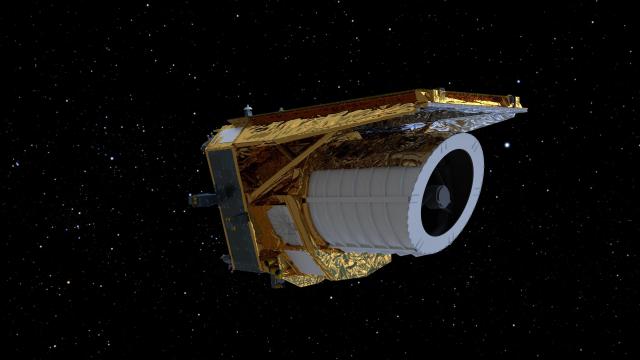The European Space Agency’s (ESA) Euclid telescope is back in action after an experimental procedure restored its ability to see the light in the cold, dark depths of space.
After noticing a gradual dip in the amount of light measured by Euclid from its surrounding stars, the team behind the mission devised a plan to heat parts of the spacecraftto get rid of frozen water molecules that had accumulated on the telescope’s mirrors. The plan was risky and not guaranteed to work, but things are looking good for Euclid so far.
Mission control de-iced the first two mirrors and, sure enough, more light began creeping in through Euclid’s optical instruments. Euclid’s coldest mirror was heated from -232 to -171 degrees Fahrenheit (-147 to -113 Celsius).
“It didn’t need to get hot, because in a vacuum this temperature is enough to quickly evaporate all the ice,” Mischa Schirmer, calibration scientist for the Euclid Consortium and one of the main designers of the de-icing plan, said in a statement. “And it worked like a charm! Almost immediately, we were receiving 15% more light from the Universe. I was certain that we would see a considerable improvement, but not in such a spectacular way.”
Euclid launched in July 2023 to study the dark universe—the parts of our cosmos made up of dark energy and dark matter—using a visible light camera (VIS), a near-infrared camera, and spectrometer (NISP). The team began noticing a dip in the amount of light measured by VIS, or Euclid’s eye as they refer to it.
After months of investigating, the team discovered that several layers of water molecules had likely frozen onto the mirrors of Euclid’s optical instruments. Although it’s a very thin layer of water ice, maybe a few tens of nanometers thick (about the same width of a strand of DNA), it was enough to affect Euclid’s highly sensitive vision.
To restore Euclid’s sight, the team came up with a plan to heat the spacecraft using a decontamination procedure developed before launch. However, switching on the telescope’s on board heaters risked affecting its mechanical structure, potentially leading to expansion that might not allow the spacecraft to revert to its original size. Instead, mission control opted to heat low-risk optical parts of the spacecraft, starting with two of Euclid’s mirrors that can be independently warmed up.
“The mirrors, and the amount of light coming in through VIS will continue being monitored, and the results from this first test will continue to be analyzed as we turn this experiment into a core part of flying and operating Euclid,” Ralf Kohley, Euclid instrument scientist, said in a statement.
Euclid is currently located around one million miles (1.5 million kilometers) away from Earth, where temperatures can plummet to about -455 degrees Fahrenheit. Frozen water molecules are a common problem for spacecraft at this distance, and the team expects ice to cloud Euclid’s vision again in the future.
Euclid needs to have its optical system as ice-free as possible to be able to observe the dark universe, and the team is ready to repeat this selective decontamination procedure every six to twelve months, according to Reiko Nakajima, VIS instrument scientist.
